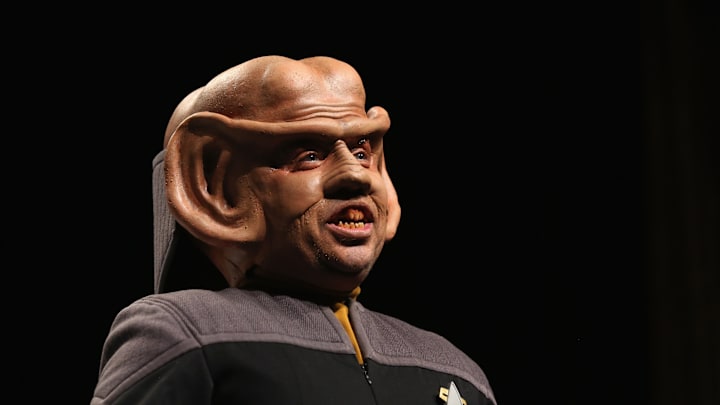Recently, Redshirts Always Die published an article about why Star Trek is at its best with episodic storytelling. These slices of life that stand on their own often improve or expand a character’s arc within the space of an episode with a clear beginning, middle, and end, such as the way “Journey to Babel” (S02E10) did for Spock in the original series.
Other Star Trek series do well with this type of storytelling, but one of the best examples is Deep Space Nine’s “It’s Only a Paper Moon” (S07E10), where Ensign Nog suffers a terrible injury in a conflict between Defiant personnel and the Jem’Hadar on planet AR-558. The events that follow in this episode remind us that not all of the problems of today are resolved in the 24th century because despite advancing technology, it is emotional trauma that heals the slowest of all.
How bodily change affects Nog’s mind
When this episode begins, everyone on the station applauds Nog when he returns from having his injured leg replaced with a bio-synthetic one. Captain Sisko tells Nog they’ve planned a welcome back party for him, but Nog declines company and says he’d rather be alone in his quarters.
This scene felt personal to me in a way I couldn’t pin down until I remembered my mother’s hip replacement, which she underwent in 1997. When she returned home from physical therapy, we all wanted to celebrate, but her moods ran from impatient to depressed to moments of bitterness. It wasn’t until just before her passing in 2023 that we discussed it, and she told me that while having the hip replacement resolved a lot of her arthritis pain, she still mourned for a part of herself that, while imperfect, was still her flesh and blood.
Nog likely experienced the first time he saw his new leg and realized a previous version of himself had died, so there was no reason to celebrate.
Why Nog’s compulsion to escape reality feels relatable
After Captain Sisko places Nog on indefinite medical leave, the ensign begins to visit a holosuite program centered in 1962 Las Vegas, where a lounge singer named Vic Fontaine runs Vic’s Las Vegas Lounge. Nog seeks out the singer’s ability to croon old Sinatra hits and has him sing, “I’ll Be Seeing You,” a song Dr. Bashir played as Nog healed from his leg injury on the medical station. Soon after, Nog turns his back on his own reality and chooses to live with Vic and in his holographic world.
Nog delves into a new life based completely on what we today might call roleplay. He doesn’t leave the holosuite and creates a whole new version of himself. As he does, he seems to heal faster and abandons the use of the cane Dr. Bashir claimed wasn’t necessary to begin with.
Anyone who’s ever roleplayed online, especially in ongoing story threads, can tell you how immersive they can be. The rich plots, the ability to look any way you please, or be whoever you want, is like a digital vacation. In this case, Nog’s wish to live in this fake world is both a curse and a balm because while he refuses to leave it, there’s no doubt that Vic and his holographic world helped heal the Ferengi ensign.
“It’s Only a Paper Moon” is ultimately a metaphor for how people cope with loss and trauma, both physical and emotional. However, because Star Trek is about hope, the story tells us that how we heal is more important than when.
More from Redshirts Always Die:
